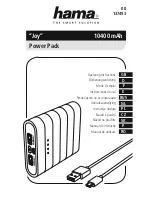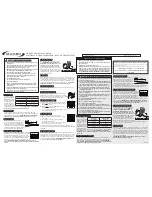
-52-
Model G0757 (Mfg. Since 6/13)
Adjusting Gibs
Gibs are tapered lengths of metal that are sand-
wiched between two moving surfaces. Gibs con-
trol the gap between these surfaces and how they
slide past one another. Correctly adjusting the
gibs is critical to producing good results.
Correctly positioning gibs is a matter of trial and
error and patience. Tight gibs make table move-
ment more accurate but stiff. Loose gibs make
table movement sloppy but easier to do. The goal
of gib adjustment is to remove unnecessary slop-
piness without causing the ways to bind.
Many experienced machinists adjust the gibs just
to the point where they can feel a slight drag in
table movement.
Screws on each end of the gib allow gib adjust-
ment to increase or decrease the friction between
the sliding surfaces.
DISCONNECT MACHINE FROM POWER
BEFORE ADJUSTING THE GIBS!
Make sure all table locks are loose. For the X- and
Y-axis gibs, loosen one gib adjustment screw (see
Figure 69) and tighten the opposite screw the
same amount to move the gib, while at the same
time rotating the handwheel to move the table until
you feel a slight drag in that path of movement.
Note: Remove the way cover behind the table
to gain access to the rear Y-axis gib adjustment
screw.
Figure 69. Locations of X- and Y-axis gib
adjustment screws.
X-Axis Gib Screw
(1 of 2)
Y-Axis Gib Screw
(1 of 2)
The Z-axis gib has only one adjustment screw on
the top of the gib (see
Figure 70) that moves the
gib up and down. Use the same method of adjust-
ment as the other gibs with the one screw.
Note: Remove the way cover behind the table to
gain access to the Z-axis gib adjustment screw.
Figure 70. Location of Z-axis gib adjustment
screw.
Z-Axis
Gib Screw
Summary of Contents for G0757
Page 80: ...74 Model G0757 Mfg Since 6 13...
Page 84: ......
















































